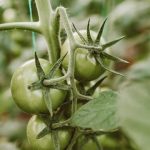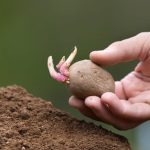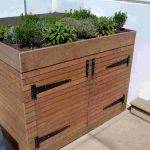Are you looking to take your vegetable gardening skills to the next level? Look no further, as we delve into the world’s best vegetable gardening ideas that will inspire and guide you on your journey to create a thriving garden full of delicious and nutritious produce. From innovative planting techniques to effective pest management strategies, this article will provide you with a comprehensive overview of how to elevate your vegetable gardening game.
Embarking on the adventure of growing your own vegetables not only offers the satisfaction of harvesting fresh produce from your backyard but also provides numerous health benefits. By incorporating homegrown vegetables into your diet, you can ensure a higher nutrient content and minimize exposure to harmful chemicals often found in store-bought produce. Additionally, tending to a vegetable garden has been proven to reduce stress, improve mood, and promote overall well-being.
Before you start planting seeds and digging up soil, it is essential to have a well-thought-out plan for your vegetable garden.
In the following sections, we will discuss the benefits of vegetable gardening, offer tips for designing an efficient and aesthetically pleasing garden space, highlight essential tools and equipment needed for success, provide guidance on soil preparation and maintenance, explore creative planting ideas, share insights on pest and disease management, and offer advice on harvesting and enjoying the fruits of your labor.
Let’s dive into the world’s best vegetable gardening ideas together.
Benefits of Vegetable Gardening
Vegetable gardening is not only a rewarding and fulfilling hobby, but it also offers numerous benefits that go beyond just the satisfaction of growing your own food. One of the primary advantages of vegetable gardening is the ability to harvest fresh, organic produce right from your backyard.
This means you have control over what goes into your vegetables, ensuring they are free from harmful chemicals and pesticides commonly found in store-bought produce. Additionally, growing your own vegetables allows you to enjoy a wider variety of flavorful and unusual varieties that may not be readily available at the grocery store.
Another benefit of vegetable gardening is the opportunity to reduce your environmental impact. By growing your own produce, you can lower your carbon footprint by reducing the need for transportation and packaging associated with store-bought vegetables. Additionally, home gardens help promote biodiversity and provide habitats for beneficial insects such as bees and butterflies. Vegetable gardening also encourages sustainable practices such as composting and water conservation, making it a more eco-friendly way to enjoy fresh food.
Beyond the physical health benefits of eating fresh vegetables, gardening has been shown to have positive effects on mental well-being as well. Spending time outdoors tending to your garden can reduce stress levels and improve mood. The act of caring for plants and watching them grow can be incredibly therapeutic, providing a sense of accomplishment and connection to nature.
Engaging in vegetable gardening can also foster a sense of community as you share produce with neighbors or participate in local garden clubs or farmers markets. With these many benefits, it’s no wonder why exploring the world’s best vegetable gardening ideas can lead to a truly rewarding experience both physically and emotionally.
- Fresh, organic produce
- Control over what goes into your vegetables
- Opportunity to enjoy different flavorful varieties
Planning Your Vegetable Garden
Vegetable gardening is a fulfilling and rewarding activity that can provide you with fresh, organic produce right from your own backyard. Planning your vegetable garden is an essential step to ensure that you have a functional and beautiful space that will yield bountiful harvests. Here are some tips to help you design the perfect vegetable garden:
- Location is key: Choose a sunny spot in your yard that receives at least 6-8 hours of direct sunlight each day for optimal plant growth.
- Consider the layout: Plan out the arrangement of your vegetable beds, taking into account factors such as accessibility, water source, and any existing structures or trees that may affect sunlight exposure.
- Think about raised beds: Raised beds are a popular choice for vegetable gardening as they provide good drainage, prevent soil compaction, and make it easier to control weeds. Consider building raised beds for your vegetables to maximize growth.
When planning your vegetable garden, also consider companion planting. This technique involves planting certain vegetables together to benefit each other by deterring pests, attracting pollinators, or providing shade. For example, planting garlic alongside tomatoes can help repel pests that commonly affect tomato plants.
Remember to rotate your crops each season to prevent nutrient depletion and disease buildup in the soil. By following these tips for designing a functional and beautiful garden space, you’ll be well on your way to implementing the world’s best vegetable gardening ideas in your own backyard.
Essential Tools and Equipment
When embarking on the journey of starting your own vegetable garden, having the right tools and equipment is essential for a successful and bountiful harvest. From preparing the soil to maintaining your plants, here are some must-have items that will make your gardening experience more efficient and enjoyable.
Hand Tools
One of the most basic but indispensable tools for vegetable gardening is a set of hand tools. A sturdy trowel, hand fork, and weeder are essential for planting, transplanting, and weeding. Look for high-quality hand tools with ergonomic handles to reduce strain on your hands and wrists during long hours in the garden.
Garden Gloves
Protecting your hands while working in the garden is crucial to prevent cuts, blisters, and irritation from plants. Invest in a durable pair of garden gloves that fit well and provide good grip. Choose gloves made from breathable materials to keep your hands cool and comfortable while working.
Irrigation System
Keeping your vegetable plants adequately watered is key to their growth and productivity. Consider installing an irrigation system such as drip lines or soaker hoses to provide consistent moisture to your plants without wastage. An irrigation system can help save time and ensure that water reaches the roots where it’s needed most.
By ensuring you have these essential tools and equipment on hand, you’ll be well-equipped to tackle any gardening task with ease and efficiency. With the right gear at your disposal, you can focus on nurturing your plants and enjoying the fruits of your labor as you cultivate a thriving vegetable garden filled with fresh produce grown with care and dedication.
Growing Season Guide
When it comes to successful vegetable gardening, understanding the growing seasons for different plants is key. Each type of vegetable has its own ideal planting and harvesting time based on factors such as temperature, sunlight, and soil conditions. By following a growing season guide, you can ensure that your vegetables thrive and produce a bountiful harvest.
Spring Vegetables
In the early spring, cool-season vegetables like lettuce, spinach, peas, and carrots thrive in the mild temperatures. These crops can be planted as soon as the soil is workable and will continue to grow throughout the season. Be sure to sow them at the right depth and spacing to maximize growth potential.
Summer Vegetables
As temperatures rise in the summer months, warm-season vegetables such as tomatoes, peppers, cucumbers, and squash are ready to be planted. These heat-loving plants require ample sunlight and consistent watering to produce a successful crop. By starting these vegetables indoors or purchasing seedlings from a nursery, you can get a head start on their growth before transplanting them into your garden.
Fall Vegetables
For those looking to extend their growing season into the fall months, consider planting cold-hardy vegetables like kale, Brussels sprouts, radishes, and cabbage. These crops can withstand cooler temperatures and even light frost, providing fresh produce well into autumn. By planning ahead and selecting varieties that are suitable for fall harvests, you can enjoy homegrown vegetables long after the traditional growing season has ended.
Understanding the best times to plant and harvest different vegetables is essential for a successful garden. By following a growing season guide tailored to your region’s climate and conditions, you can maximize your harvest and enjoy a wide variety of fresh produce throughout the year. Whether you’re starting your first garden or looking to expand your existing plot, incorporating these seasonal tips will help you achieve the world’s best vegetable gardening ideas.
Soil Preparation and Maintenance
Another important aspect of soil preparation is ensuring good drainage. Poorly drained soil can lead to root rot and other issues that can affect plant health. Raised beds or adding organic materials like perlite or vermiculite can help improve drainage in heavy clay soils. Regularly aerating the soil by gently turning it with a garden fork can also prevent compaction and promote healthy root growth.
Once you have prepared your soil, it is essential to maintain its health throughout the growing season. Mulching around vegetable plants can help retain moisture, suppress weeds, and regulate soil temperature. Avoid walking on garden beds to prevent compaction, which can restrict root growth and water infiltration. Additionally, rotating crops each season can help prevent nutrient depletion and reduce the risk of disease buildup in the soil.
| Aspect | Recommendation |
|---|---|
| Soil Testing | Test your soil’s pH level for necessary amendments. |
| Drainage Improvement | Add organic materials or consider raised beds for better drainage. |
| Maintenance | Mulch around plants, avoid compaction, and rotate crops for healthy soil. |
Pest and Disease Management
One of the best ways to prevent pest infestations is by practicing good garden hygiene. This includes regularly removing weeds, fallen leaves, and other debris that can harbor pests. You can also encourage beneficial insects like ladybugs and lacewings to take up residence in your garden by planting flowers that attract them. These insects will help keep pest populations in check naturally.
When it comes to disease management, prevention is key. Start by choosing disease-resistant vegetable varieties whenever possible. Proper spacing between plants can also help improve air circulation and reduce the risk of fungal diseases.
If you do notice signs of disease, such as wilting or yellowing leaves, act quickly to remove affected plants or infected areas to prevent the spread to healthy plants. Consider using organic fungicides or homemade remedies like neem oil or a garlic spray to combat diseases in a natural way.
By incorporating these natural pest and disease management strategies into your vegetable gardening routine, you can protect your plants without resorting to harsh chemicals. Not only will this approach be better for the environment, but it will also ensure that you can enjoy a bountiful harvest of homegrown vegetables all season long. Remember, prevention is key when it comes to maintaining a healthy and thriving vegetable garden.
Creative Planting Ideas
When it comes to creating a vegetable garden that stands out, thinking outside the box is key. One of the world’s best vegetable gardening ideas is utilizing vertical space effectively. Vertical gardens not only save space but also create a stunning visual impact. You can grow vining vegetables such as beans, cucumbers, and peas on trellises or in hanging baskets. This not only maximizes your growing area but also adds an interesting dimension to your garden.
Another innovative planting idea is companion planting. By strategically placing certain plants together, you can help each other thrive by repelling pests or attracting beneficial insects. For example, planting marigolds alongside tomatoes can deter nematodes, while pairing basil with tomatoes can improve the flavor of the fruit. This symbiotic relationship between plants not only benefits their growth but also adds aesthetic appeal to your garden layout.
Additionally, consider incorporating raised beds into your vegetable garden design. Raised beds provide better drainage, warmer soil temperatures, and easier access for planting and harvesting. They also allow you to control the soil quality more effectively. Experiment with different shapes and heights for your raised beds to create visual interest in your garden while optimizing growing conditions for your vegetables.
| Vegetable Gardening Idea | Description |
|---|---|
| Vertical Gardening | Growing vining vegetables on trellises or in hanging baskets to maximize space and create visual impact. |
| Companion Planting | Strategically placing plants together to benefit growth by repelling pests or attracting beneficial insects. |
| Raised Beds | Utilizing raised beds for better drainage, warmer soil temperatures, easier access for planting/harvesting, and improved soil quality control. |
By incorporating these creative planting ideas into your vegetable garden, you can not only enjoy a bountiful harvest but also create an aesthetically pleasing outdoor space that will be the envy of all who see it. So let your imagination run wild and experiment with different arrangements to find what works best for your unique gardening style.
Harvesting and Enjoying Your Homegrown Vegetables
When it comes to picking your vegetables, timing is crucial. Each type of vegetable has its own peak ripeness indicators, so it’s important to familiarize yourself with the signs that each crop is ready to be harvested.
For example, many vegetables can be picked when they reach a certain size or color, while others are best harvested continuously as they mature. Taking the time to learn about the specific harvesting requirements of your chosen vegetables will ensure that you get the best flavor and quality from each crop.
After harvesting your homegrown vegetables, it’s time to get creative in the kitchen. From simple salads and stir-fries to elaborate gourmet dishes, there are countless ways to incorporate your freshly picked produce into delicious meals. Experimenting with different cooking techniques and flavor combinations can turn even the most humble vegetable into a culinary masterpiece.
By making use of your harvest in diverse and exciting ways, you can fully appreciate the unique flavors and textures that homegrown vegetables offer. Embrace your creativity in the kitchen and let your bountiful harvest inspire you to explore new recipes and cooking styles.
Conclusion
In conclusion, the world’s best vegetable gardening ideas are a treasure trove waiting to be explored by aspiring gardeners. From the satisfaction of growing your own food to the environmental benefits of reducing your carbon footprint, there are countless reasons to start a vegetable garden.
By following the tips and techniques outlined in this guide, you can design a functional and beautiful garden space, equip yourself with the essential tools and equipment needed for success, and navigate through the growing season with confidence.
Moreover, understanding the importance of soil preparation and maintenance, as well as learning how to effectively manage pests and diseases using natural methods, will set you on the path to a thriving vegetable garden. By infusing creativity into your planting arrangements and maximizing growth potential, you can create an aesthetically pleasing garden that yields abundant produce.
Finally, reaping the fruits of your labor at harvest time and enjoying fresh, homegrown vegetables in your meals will not only nourish your body but also nourish your soul.
So why wait? Dive into the world’s best vegetable gardening ideas today and embark on a fulfilling journey towards sustainable living. Whether you have ample backyard space or just a few pots on a balcony, anyone can experience the joys of growing their own food.
Start small, learn as you go, and watch as your efforts bloom into a bountiful harvest that enhances both your health and happiness. The world is truly at your fingertips when you embrace the art of vegetable gardening.
Frequently Asked Questions
What Is the Most Suitable for Vegetable Gardening?
The most suitable option for vegetable gardening depends on factors such as the available space, climate, and personal preferences. Raised beds are popular due to better soil drainage and warmer temperatures.
What Is the Best Vegetable Garden Layout?
When it comes to the best vegetable garden layout, raised beds are a great option since they provide better soil quality and drainage. Additionally, having defined paths between rows can help with maintenance and access to plants.
What Are the Most Attractive Vegetables to Grow?
Some of the most attractive vegetables to grow in a garden include colorful varieties like rainbow carrots, purple cauliflower, and red cabbage. Unique heirloom tomatoes and vibrant Swiss chard can also add visual interest to your garden.

Welcome to my gardening blog! I am passionate about plants and enjoy sharing my knowledge and experiences with others. In this blog, I will write about everything related to gardening, from tips on how to get started to updates on my own garden projects.





